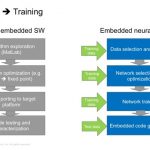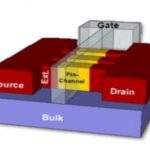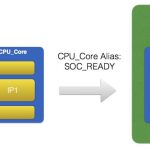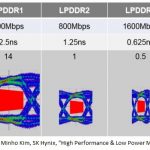If you are not yet familiar with the term Convolutional Neural Networks, or CNN for short, you are certainly bound to become in the year ahead. Using Artificial Intelligence in the form of CNN is on the verge of replacing a large number of computing tasks, especially those involving recognizing things such as sounds, shapes, objects,… Read More
Electronic Design Automation
S2C opens up FPGA prototyping for PCIe fabrics
Reconfigurable computing began with FPGA cards dropped into expansion slots in workstations. FPGA-based prototyping vendors tended away from that model as interconnect speeds rose and cabling complexity between modules increased. Much faster PCIe interfacing and bigger FPGAs mean revisiting the concept.… Read More
Synopsys at DVCon 2016
It’s that time of year again – DVCon starts on Monday Feb 29[SUP]th[/SUP] and as always should be a packed event. Synopsys plans a big showing, in the exhibit hall, in a sponsored lunch, at tutorials and in papers. Time to get your conference shoes on and go check them out – I plan to be there all week.
One of the most obvious things you will… Read More
A Brief History of Open-Silicon
In 2003, when Open-Silicon was founded there was a growing need for flexible and innovative ways of getting chip designs manufactured. Semiconductor companies, given the alternatives of COT or traditional ASIC, often were looking for more flexibility without the huge investment and risk of going COT. Let’s look at how Open-Silicon… Read More
Advanced Micro Device’s New Polaris FinFET-Based Architecture Could Open New Doors
It seems of late like there is an unlimited thirst for GPU performance at the right power efficiency. Whether it is deep learning, object recognition, artificial intelligence, simulations, VR or AR, the industry desperately needs GPU improvements. Many within the graphics industry would agree that a new era of graphics performance… Read More
FinFETs, Power Integrity and Chip/Package Co-design
FinFETs have brought a lot of good things to design – higher performance, higher density and lower leakage power – promising to extend Moore’s law for a least a while longer. But inevitably with new advances come new challenges, especially around optimizing for power integrity in these designs.
One of these challenges is… Read More
The (not so) Easy Life of an SOC Design Integrator
How can large SOC projects effectively integrate sub blocks and IP into a stable version for release or internal development? The person responsible for integrating SOC sub blocks into a validated configuration for release has a difficult task. Usually there are many sub-blocks, each undergoing their own development. There… Read More
DDR4 is a complex interface to verify — assistance needed!
The design of parallel interfaces is supposed to be (comparatively) easy — e.g., follow a few printed circuit board routing guidelines; pay attention to data/clock/strobe signal lengths and shielding; ensure good current return paths (avoid discontinuities); match the terminating resistances to the PCB trace impedance;… Read More
Fastest SoC time-to-success: emulators, or FPGA-based prototypes?
Hardware emulators and FPGA-based prototyping systems are descendants of the same ancestor. The Quickturn Systems Rapid Prototype Machine (RPM) introduced in May 1988 brought an array of Xilinx XC3090 FPGAs to emulate designs with hundreds of thousands of gates. From there, hardware emulators and FPGA-based prototyping … Read More
Top Ten Insights on the EDA and Semiconductor Industry
I recently had the opportunity to chat with Anirudh Devgan, senior vice president and general manager at Cadence, who leads the Digital and Signoff Group. We discussed recent product development initiatives at Cadence, and talked about future EDA and semiconductor market opportunities. His insights and comments were keen … Read More








AI RTL Generation versus AI RTL Verification